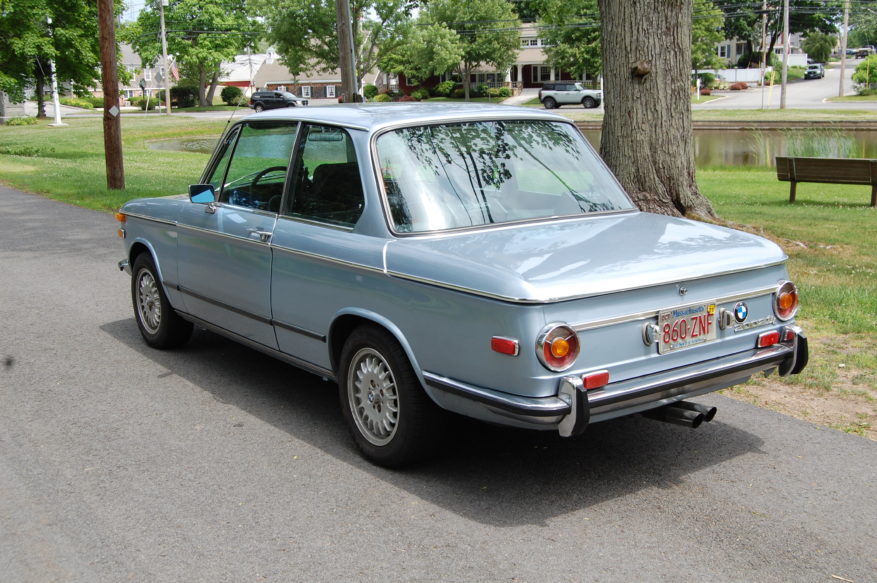Last week I wrote about the alternator in my E39 dying. Just to finish that up, replacing the voltage regulator fixed it. However, I’m keenly aware that with 200,000 original miles on the alternator, the smarter move probably would’ve been to replace it, not just the regulator. I didn’t want to, because I hate having to deal with the E39’s serpentine belt, removal of which requires removing the viscous clutch and fan, which in turn requires lifting up the shroud, which in turn requires disconnecting the expansion tank and hoses from it.
However, I did want to be certain that the alternator’s bearings were okay, and that required spinning it by hand, so the belt had to be slipped off. I discovered that I could leave the fan and shroud in place and slip a small breaker bar with an 8-mm hex bit in it (that’s what’s required to move the tensioner pulley) from the side. With that knowledge, I now know that replacing this alternator in a rest area isn’t nearly as onerous as I thought. I think I’ll buy an inexpensive used one to carry as a spare.

The old slip-the-tensioner-bit-in-from-the-side trick.
On to the main event.
Last week, I said that the reason for my trip up to the Massachusetts north shore was that I was looking at three 2002s, two of which, coincidentally, were owned by women whose 2002-loving husbands had recently passed away. While I am a non-observant Jew, my mother instilled in me the concept of doing mitzvahs (good deeds), so I wanted to help both of them.
The woman in Amesbury has a beautiful Malaga ’76 2002; owned by her husband since 1986, restored and hot-rodded, beautiful interior and engine compartment, painted undercarriage, five-speed, Webers. I drove it, and it went like a bat out of hell. She has a recent appraisal of the car for $30,000, and that’s probably a reasonable number. She’s putting together more photos. When I get them, I’ll post the car on my Facebook page, but if you’re interested, message me at rsiegel@roundel.org and I’ll give you her contact info. I have no skin in the game–just trying to help.
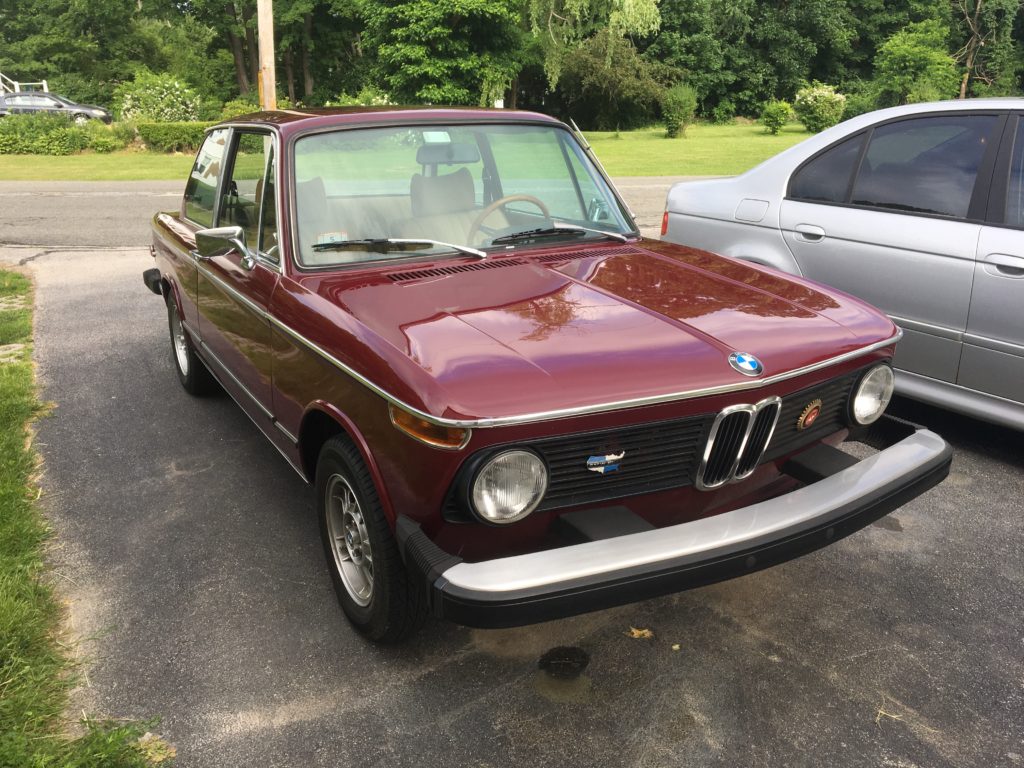
Pam’s beautiful ’76 2002, waiting for a sunny day to make the Malaga paint pop for pictures.
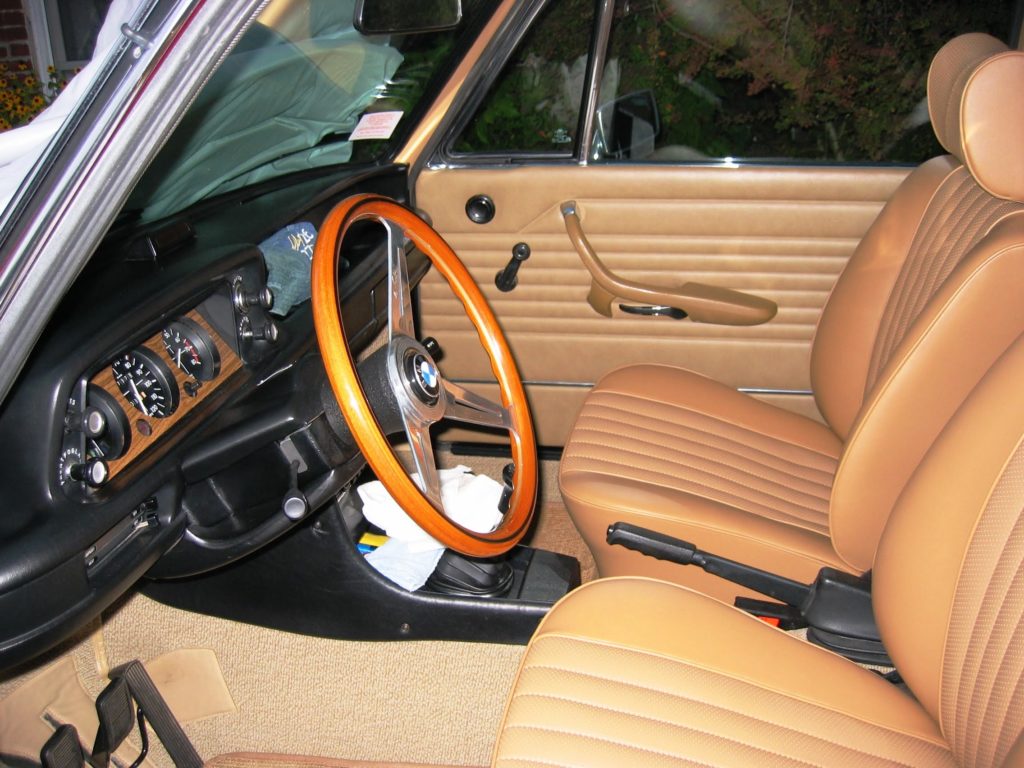
Not sure when this was taken, but the interior still looks like this.
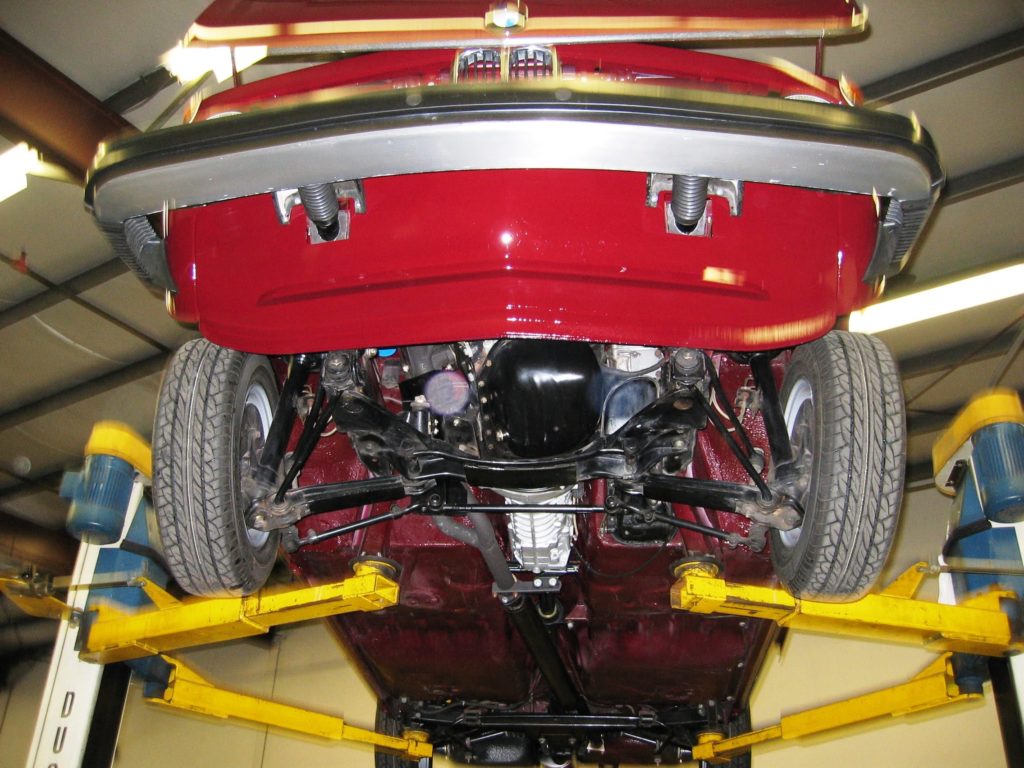
Also an old photograph. The underside wasn’t quite this minty clean when I crawled under it. But it shows what was done.
The other woman’s story also had a lot of resonance. A mutual acquaintance had put us in touch. Chris’ husband, long-time CCA member Jim Zanfagna, who died last year, was the original owner of the car–a Fjord blue ’72 2002tii. The basic story was that Jim daily-drove the car (as original owners did) until the New England winters ate it, at which point he had rust-remediation work done. He built a garage for it in the late ’90s, after which it was only used for pleasure driving.
The mutual acquaintance—Michael—told me that while Jim was dying, he apparently told Chris, “Don’t sell the baby [the car’s name] for less than $60,000.” Michael, who is also a 2002 owner, said that he’d seen and driven the tii, and while it was nice, he didn’t think it was a $60,000 car. I swapped several emails and phone calls with Chris. She expressed interest in having me sell the car for her.
I went to Newburyport to visit Chris and “the baby.” The car was stored in a small garage at a right angle to the end of a very narrow driveway, requiring several lock-to-lock rotations of the steering column to get it in and out.

A challenging garage to get in and out of.
The car’s paint was a beautiful Fjord blue, and the original interior presented well. However, the evidence of the rust remediation put a cap on the car’s value. The engine compartment, trunk, and sections of the undercarriage had a black gravel-guard-like coating, and the bodywork clearly wasn’t done by a vintage BMW specialist, because the seams where the upper parts of the fenders join the nose were plainly visible. The presence of a replacement engine was another knock on the car’s potential value, although the original numbers-matching engine was sitting in the garage.
I was also surprised at the presence of an intake manifold with metal plenums. There was little doubt that the car was a ’72, as it has the early pre-two-and-a-half-mph bumpers; the rear bumper is bolted directly to the body without an intervening bracket, and the front bumper is close to the nose, and there’s no notch in the cowl to help you see the timing ball.
As many know, part of the mystique of 1972 tii’s is that they have a 121 head and plastic intake plenums connoting the almost-prototype nature of the Kugelfischer injection. The plastic plenums, however, were leak-prone, so for model year 1973, the intake manifold was changed to use metal plenums, along with the head changing to the E12 head. However, our own Paul Wegweiser documented years back that according to the parts books, BMW actually changed the tii to use metal plenums and the E12 head, then briefly switched back to plastic and the 121 head before changing permanently to the metal/E12 combo. Paul’s numbers, which can be found on bmw2002faq.com, are:
2760001-2761944 = plastic runners/121 head
2761945-2762014 = metal runners/E12 head
2762015-2762372 = plastic runners/121 head
2762373 on = metal runners/E12 head
The VIN of this car is 2761960. Both the original engine sitting in the garage and the replacement engine in the car have E12 heads, so it appears that the metal plenums are original to the car.
Chris said that Michael (the mutual acquaintance) drove the car about a month ago, but other than that, it has been sitting on a battery tender since her husband Jim passed away last year. I gave it a quick once-over, and found that the brake fluid level was down halfway, to the spot where it feeds the clutch pipe—a sure sign that the clutch hydraulics were leaking. The clutch appeared to still be working, but this could end at any moment.
Chris ran to the nearest hardware store and came back with a bottle of brake fluid. I topped up the reservoir, pumped the clutch, and didn’t see fluid streaming out from under the car. I did a quick inspection check, and found that the right front and rear turn signals weren’t working. I also noticed that the inspection sticker had expired, so I needed to be careful regarding a test drive.
I started the car, did the five-point turn required to get it out of the garage, and immediately noticed a lot of brake-pedal travel. It didn’t feel soft, as it would from air in the brake lines, just unnaturally long. But other than that, the car generally ran and rode well. We took it to a dead-end street where I photographed it and shot a walk-around video. I then headed home, and had the alternator in my E39 die.

Boy, that Fjord blue paint is pretty.
I’ve only brokered the sale of a handful of cars, but whether it’s my car or someone else’s, my philosophy is:
- Photograph, photograph, photograph, and disclose, disclose, disclose. Telling the truth about a car helps reduce risk to potential buyers, particularly on auction sites where people are bidding and buying sight-unseen. By showing and explaining what a car actually is, you reduce the risk to people of what it might be, and that increases the number of bids.
- It’s better to repair something than apologize for it. Obviously there are hard limits to this—paint and bodywork, for example—but any list of a car’s foibles should be a punch list for pre-sale repairs.
- Sort out the car and present it as the best version of what it actually is.
Jim’s car is a one-owner, very-original-looking ’72 2002tii that was beloved, used as a daily driver until it rusted, rust-repaired by a local body shop, then garaged and used as a pleasure driver for 25 years. There were some minor under-hood issues (incorrect fuel-hose routing and a battery that was too large, requiring it to be rotated 180 degrees, with incorrect battery cables). The interior was largely original, but it was missing the salt-and-pepper rug pieces on the driver’s side floor, probably lost during the rust repair decades ago. In their place was a black piece of indoor-outdoor carpeting. And the E30 bottlecap wheels were the vogue thing to do in the 1990s, but the original rare tii-specific steel wheels, if they existed, would complete the original look of the car.
Over the next few days I corresponded with Chris, recommending a punch list by which she would have the turn signals repaired, get the car inspected, have the rear brakes adjusted to reduce the pedal travel, and have the clutch hydraulics replaced. Unfortunately, the regular local mechanic who’d worked on the car for Jim had recently injured his back and was unavailable.
After a brief discussion, I agreed to take possession of the car.
I rented a U-Haul auto transporter, went up with my truck, and grabbed the car, as well as a few boxes of parts. I noted that one box had the car’s original hubcaps and asked again if she had the steel wheels. We looked in the basement, and there they were, along with some old metal ramps and jack stands. I threw it all in the back of the truck.

“The baby” is delivered to my house in West Newton.
I thought that I’d submit the car to Bring A Trailer and see if they accepted it, but to do that, I’d need to submit photos I’d already taken. While you can change photos after they’re submitted, it’s really easier if all or most of them are correct before submission, particularly if you’re changing multiple shots, as would be the case if I painted the steel wheels, shod them with tires, and put them on the car.
So I ordered the Duplicolor Cast Coat Aluminum paint that my friend Paul Wegweiser uses for painting wheels, and put a post up on my Facebook page asking if any of my 2002 peeps had or knew of the driver-side pieces of salt-and-pepper carpeting, and a pair of original 2002 battery cables. New photography would need to wait until these items were in hand.
While I was waiting, I started in with the mechanical sort-out. I began with the turn signals, since that’s the inspection issue. If one signal doesn’t work, it’s the bulb. If all don’t work, it’s usually the hazard switch or the fuse. One side not working both front and rear implicates the stalk. Michael said that when he drove the car, he was able to get the right turn signals working by pulling the stalk in slightly. I tried it. He was right.
Unfortunately, I looked in my box of stalks (what, you don’t have a box of stalks?) and could not find a single one that had a fully-populated nine-pin connector like the one in the car.

Rather a let down to have accumulated all these yet not have the one I needed.
So I took the stalk apart and tried to fix it. Unfortunately, it’s not really designed to be disassembled; since the housing is made of 50-year-old pot metal and Bakelite plastic, the metal tabs snap off instantly when you try to bend them back. But with it apart, I cleaned the contacts and bent them slightly outward to increase pressure. I apparently did that with the wiper / washer contact without realizing it, as initially the wipers came on and wouldn’t shut off. Careful reverse bending of the contact corrected my error.
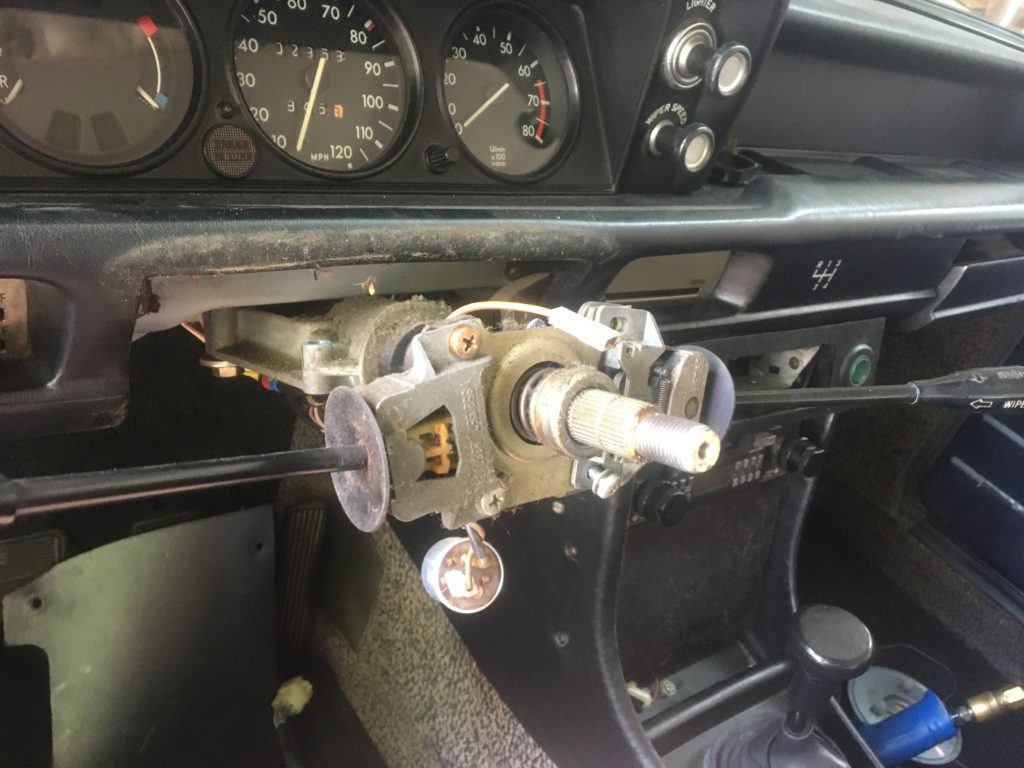
Exposing the stalk.

Monkeying with what shouldn’t be monkeyed with.
With the stalk housing zip-tied together and the turn signals working, I hastily beat it down to the inspection station. The technician passed the car and gave it a sticker, but told me that something in the front end was loose (“probably a ball joint or tie rod”).
I then put the car up on my mid-rise lift to deal with the brake travel and the leaky clutch hydraulics. I hoped that I could just adjust the rear brakes, but removing the drums and inspecting the shoes revealed that the left forward shoe was worn almost down to the metal. I pulled off the shoes, heated up the adjusters with a torch, lubricated them with wax, worked them back and forth until they moved freely, and put new shoes, drums, and wheel cylinders on order.
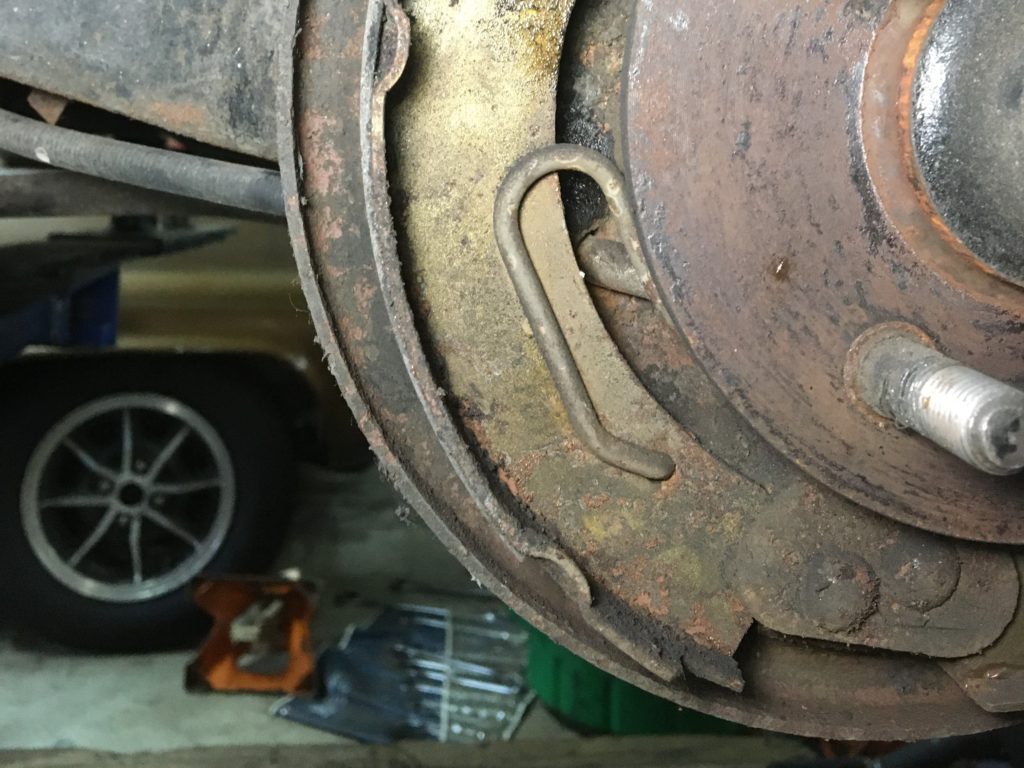
Whoa, that is one skinny brake shoe.
Next, I checked the clutch hydraulics. The slave was clearly leaking, and I could reach into the pedal bucket and feel moisture, indicating that the master was probably leaking, too. I put both on order.

Yup. Wet.
So that’s where we are: in mid-mitzvah. It’ll never be a $60,000 tii, but I’ll try to honor Jim Zanfagna’s memory and his wife’s wishes by doing the best job I can with his beloved car.—Rob Siegel
Rob’s new book, The Best of The Hack Mechanic, is available here on Amazon, as are his seven other books. Signed copies can be ordered directly from Rob here.

